With the present progression rate in medical science, kyphoplasty has been gaining ground as a popular treatment for osteoporosis fractures. Osteoporosis makes the bones brittle and prone to frequent breakage. The demineralization of the bones mostly occurs with progressing age and can cause frequent fractures. In cases that involve fracturing of the vertebrae, kyphoplasty is highly implemented. The procedure is furnished through minute invasion and uses bone cement to join and restructure the broken bone. As compared to other spinal surgeries, the average kyphoplasty cost is $6000 and is performed in major countries across the world.
Kyphoplasty is a type of spinal surgery that involves cementing fractured vertebral column. The surgery is swift and requires a minute invasion through which a trocar is inserted. For the correct insertion, the surgeons may require assistance for advanced X-Ray imaging, in order to locate the area of the fracture. Through the trocar, a balloon or kyphon is inserted, which then inflates and makes room for pouring the bone cement.
In advanced stages of osteoporosis, bone fractures become frequent and need medical attention. However, surgical procedures like kyphoplasty are recommended only in case of bone fractures, or cracks in the vertebral column. Thus, ideal candidates for the procedure are individuals who:
Kyphoplasty cost mostly depends on the kyphon kit or the balloon used in the surgery. In general, a single balloon costs approximately $3500, or more. Apart from this, the other factors affecting the cost are:
| Country | Cost | Local_currency |
|---|---|---|
| Greece | USD 11000 | Greece 10120 |
| India | USD 6000 | India 498900 |
| Israel | USD 28000 | Israel 106400 |
| Poland | USD 15500 | Poland 62620 |
| South Korea | USD 10300 | South Korea 13829707 |
| Spain | USD 28000 | Spain 25760 |
| Turkey | USD 12000 | Turkey 361680 |
| United Arab Emirates | USD 14000 | United Arab Emirates 51380 |
| United Kingdom | USD 3500 | United Kingdom 2765 |
Treatment cost
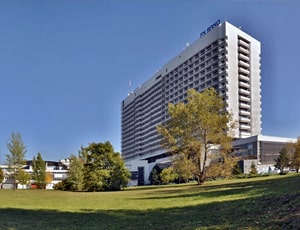
Apart from in-detail treatment procedures available, Czech Medical Center located in Brno, Czechia has a wide variety of facilities available for International Patients. Some of the facilities which are provided by them are Accommodation, Airport Transfer, Choice of Meals, Interpreter, SIM, TV inside room. Also listed below are some of the most prominent infrastructural details:

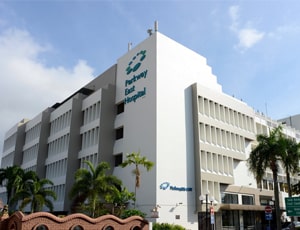
Parkway East Hospital located in Joo Chiat Pl, Singapore is accredited by JCI. Also listed below are some of the most prominent infrastructural details:
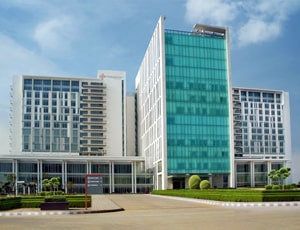
Types of Kyphoplasty in Medanta - The Medicity and its associated cost
| Treatment Option | Approximate Cost Range (USD) | Approximate Cost Range (INR) |
|---|---|---|
| Kyphoplasty (Overall) | 5732 - 8946 | 467791 - 738207 |
| Balloon Kyphoplasty | 2238 - 5608 | 182888 - 463576 |
| Vertebroplasty | 2835 - 6725 | 226890 - 555892 |

Mount Elizabeth Hospital located in Singapore, Singapore is accredited by JCI. Also listed below are some of the most prominent infrastructural details:
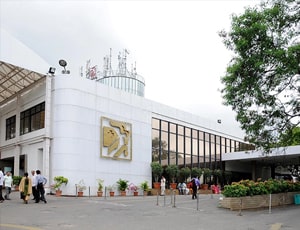
Types of Kyphoplasty in Apollo Hospitals and its associated cost
| Treatment Option | Approximate Cost Range (USD) | Approximate Cost Range (INR) |
|---|---|---|
| Kyphoplasty (Overall) | 5727 - 8808 | 455373 - 728966 |
| Balloon Kyphoplasty | 2213 - 5576 | 184038 - 458431 |
| Vertebroplasty | 2761 - 6699 | 226611 - 556972 |
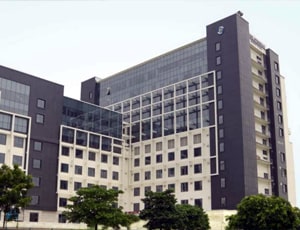
Types of Kyphoplasty in Venkateshwar Hospital and its associated cost
| Treatment Option | Approximate Cost Range (USD) | Approximate Cost Range (INR) |
|---|---|---|
| Kyphoplasty (Overall) | 5066 - 8154 | 414863 - 668167 |
| Balloon Kyphoplasty | 2038 - 5054 | 167042 - 415623 |
| Vertebroplasty | 2527 - 6107 | 208433 - 498498 |
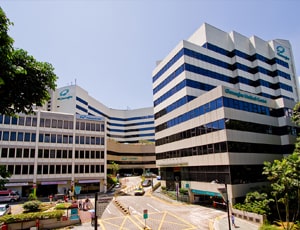
Gleneagles Hospital located in Napier Road, Singapore is accredited by JCI. Also listed below are some of the most prominent infrastructural details:
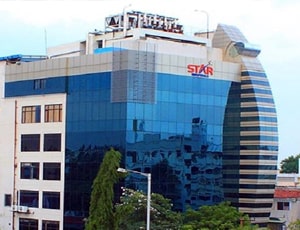
Types of Kyphoplasty in Star Hospitals and its associated cost
| Treatment Option | Approximate Cost Range (USD) | Approximate Cost Range (INR) |
|---|---|---|
| Kyphoplasty (Overall) | 4613 - 7496 | 384007 - 605643 |
| Balloon Kyphoplasty | 1890 - 4689 | 153153 - 379284 |
| Vertebroplasty | 2302 - 5540 | 189394 - 457977 |
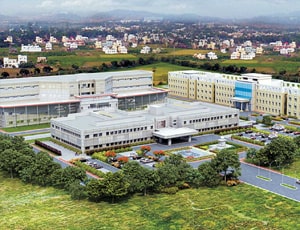
Types of Kyphoplasty in Global Health City and its associated cost
| Treatment Option | Approximate Cost Range (USD) | Approximate Cost Range (INR) |
|---|---|---|
| Kyphoplasty (Overall) | 5547 - 9134 | 451978 - 750989 |
| Balloon Kyphoplasty | 2299 - 5637 | 187930 - 456667 |
| Vertebroplasty | 2810 - 6623 | 234771 - 550465 |
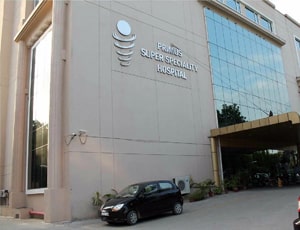
Types of Kyphoplasty in Primus Super Speciality Hospital and its associated cost
| Treatment Option | Approximate Cost Range (USD) | Approximate Cost Range (INR) |
|---|---|---|
| Kyphoplasty (Overall) | 5095 - 8116 | 416872 - 665661 |
| Balloon Kyphoplasty | 2024 - 5052 | 166385 - 414760 |
| Vertebroplasty | 2532 - 6110 | 207660 - 497639 |
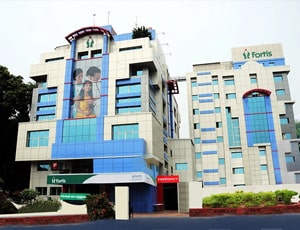
Types of Kyphoplasty in Fortis Malar Hospital and its associated cost
| Treatment Option | Approximate Cost Range (USD) | Approximate Cost Range (INR) |
|---|---|---|
| Kyphoplasty (Overall) | 5051 - 8148 | 416796 - 668042 |
| Balloon Kyphoplasty | 2022 - 5094 | 166479 - 415095 |
| Vertebroplasty | 2533 - 6103 | 208154 - 498260 |
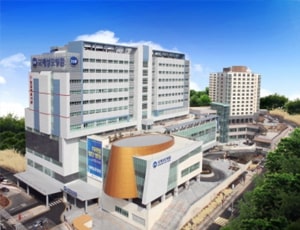
International St. Mary's Hospital located in Seoul, South Korea is accredited by JCI. Also listed below are some of the most prominent infrastructural details:
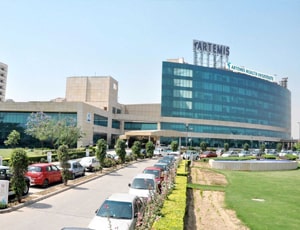
Types of Kyphoplasty in Artemis Health Institute and its associated cost
| Treatment Option | Approximate Cost Range (USD) | Approximate Cost Range (INR) |
|---|---|---|
| Kyphoplasty (Overall) | 5519 - 8891 | 468346 - 721807 |
| Balloon Kyphoplasty | 2253 - 5511 | 186483 - 466377 |
| Vertebroplasty | 2811 - 6806 | 232759 - 561297 |
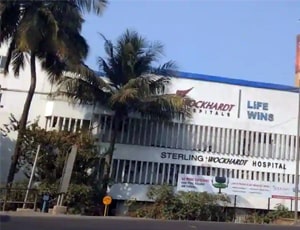
Types of Kyphoplasty in Sterling Wockhardt Hospital and its associated cost
| Treatment Option | Approximate Cost Range (USD) | Approximate Cost Range (INR) |
|---|---|---|
| Kyphoplasty (Overall) | 5056 - 8102 | 417236 - 667635 |
| Balloon Kyphoplasty | 2033 - 5083 | 165915 - 418019 |
| Vertebroplasty | 2527 - 6064 | 208272 - 497761 |

Types of Kyphoplasty in Medicana International Istanbul and its associated cost
| Treatment Option | Approximate Cost Range (USD) | Approximate Cost Range (TRY) |
|---|---|---|
| Kyphoplasty (Overall) | 6808 - 13302 | 199720 - 405137 |
| Balloon Kyphoplasty | 5065 - 9930 | 152081 - 301227 |
| Vertebroplasty | 6782 - 13382 | 203671 - 398091 |
Kyphoplasty is also known as balloon kyphoplasty. It is a minimally-invasive surgical procedure that can repair spinal fractures caused by cancer, osteoporosis, or benign lesions. It is not used for spinal stenosis treatment.
Kyphoplasty procedure is designed to relieve the intense pain caused by vertebral compression fractures, to stabilize the bone or to bring back some or all of the lost vertebral body height due to the compression fracture. Kyphoplasty or balloon kyphoplasty is a superb replacement of the typical conventional therapies such as analgesic use, bed rest, and bracing. It is a quick remedy for severe pain due to vertebral compression. It eliminates the pain almost immediately and the risk of complications during kyphoplasty is low. However, it is not intended for the treatment of arthritis or intervertebral disc disease. Kyphoplasty is different from discectomy, which is conducted in case of a herniated disc. Discectomy completely removes the damaged or herniated disc from the vertebrae of the patient.
Laminectomy and vertebroplasty are two other procedures that follow different techniques for stabilizing fractures. Laminectomy works by removing the lamina to create space, vertebroplasty works by injecting cement into the broken or cracked spine. For the same reason, vertebroplasty cost is different from kyphoplasty cost.
Kyphoplasty is typically suggested in case of:
Kyphoplasty starts by administering a local or general anaesthesia to the patient. The patient remains unconscious during the entire procedure, and therefore, is not able to feel anything. After the anaesthesia, the patient may receive antibiotics to prevent infection.The patient is then made to lie down on their stomach and is connected to the pulse, heart, and blood pressure monitors. The following the four steps in kyphoplasty procedure:
No stitches are required during the procedure, but the incision is bandaged. The bone cement dries rapidly and forms an internal cast that holds the vertebral body in place. Kyphoplasty procedure takes less than one hour if only one vertebra is being treated.
Typically, kyphoplasty does not have any severe side effects. You may experience some minor side discomfort such as soreness and redness of the skin. These problems usually resolve on their own or with minimal medical management. However, you should consult the doctor in case the symptoms persist for more than a few days.
The chances of risks and complications from kyphoplasty are overall low. But some complications may arise nonetheless. Extravasation is one such procedure that can take place in some cases but it is very rare. Extravasation refers to the leakage of bone cement from where it is supposed to stay. The risk of severe bleeding, nerve injury, spinal fluid leak, paralysis, and pulmonary embolus is less than two percent. Kyphoplasty is a safe procedure but call your doctor right away if you experience severe muscle pain, continues leg pain, back or rib pain that is really bad or gets worse over time, fever, numbness or tingling sensation, and weakness.
Ask your healthcare adviser for the best multiple options and choose the one that meets your expectations
The Kyphoplasty package cost in Czechia varies from one hospital to another and may offer different benefits. There are many hospital that cover the cost of pre-surgical investigations of the patient in the treatment package. The comprehensive Kyphoplasty package cost includes the cost of investigations, surgery, medicines and consumables. A prolonged hospital stay due to delayed recovery, new diagnosis and complications after surgery may increase the cost of Kyphoplasty in Czechia.
Many hospitals in Czechia perform Kyphoplasty. For quick reference, the following are some of the leading hospitals for Kyphoplasty in Czechia:
While the speed of recovery may vary from patient to patient, they are still required to stay for about 30 days after discharge. This is important to ensure that the surgery was successful. During this time, control and follow-up tests take place to check for medical fitness.
Apart from the Kyphoplasty cost, the patient may have to pay for additional daily expenses such as for guest house after discharge and meals. These charges starts from USD 50 per person.
Kyphoplasty in Czechia is offered in almost all metropolitan cities, including the following:
The average duration of stay at the hospital after Kyphoplasty is about 5 days for proper care and monitoring. The patient is subjected to several biochemistry and radiological scans to see that everything is okay and the recovery is on track. After making sure that patient is clinically stable, discharge is planned.
There are more than 1 hospitals that offer Kyphoplasty in Czechia. The above listed hospitals are approved to perform the surgery and have proper infrastructure to handle Kyphoplasty patients. Also, these hospitals follow the necessary guidelines as required by the medical associations for the treatment of Kyphoplasty patients.
Some of the renowned medical specialists for Kyphoplasty in Czechia are: